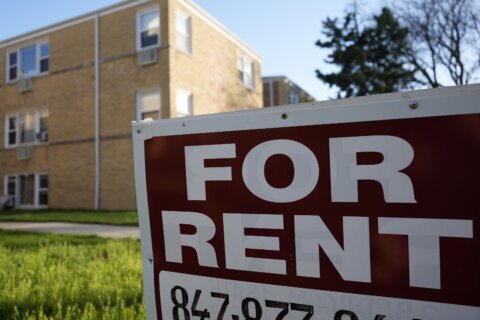Whether it’s because it was the only home available in your price range or because you’ve always dreamed of having one, you bought an older home. It could be from the 18th century or a circa-1950s mid-century modern house, but either way it probably needs a little love.
How do you get a home built before the days of smart thermostats and heated bathroom floors to meet your modern-day needs? It’s entirely possible to seamlessly blend modern function and old aesthetic, but it’s important to approach each update with the right balance to ensure one doesn’t cancel out the other.
Making updates the right way is important not only for your own peace of mind, but also to your return on investment. A well-updated, older home is going to receive far more interest and, hopefully, higher offers than a house that looks like it’s having an identity crisis. Here are a few rules to keep in mind when updating an older home with modern amenities.
Everything should be in proportion. Many parts of a home’s design are carefully crafted to fit properly with each other, even if it’s not obvious. Changing one part of a room without adjusting other aspects accordingly could leave you tilting your head, trying to figure out why it just doesn’t look right anymore.
Window height and front porch railings serve as a key example, and one that can easily throw off the look of the home’s exterior. While a standard railing height today is 3 feet, windows from previous generations might sit a bit lower. So if you update a porch and place the railing to meet with modern norms or building codes, suddenly the lines don’t match up.
“It looks like a funhouse railing — it’s stretched out and it’s out of proportion to the house, so it doesn’t resonate with your subconscious correctly,” says Ken Roginski, an architectural design and restoration consultant in Freehold, New Jersey, where he operates his firm, Old House Guy LLC, and a restoration blog of the same name.
To keep your home from looking slightly off, it’s best to maintain the proportion set in the original design, if possible, which is also imperative to maintaining the historic feel of the building.
Proportion is also key when adding onto a home or constructing an outbuilding such as a shed or garage that didn’t previously exist.
Roginski recommends taking inspiration from the original parts of the building and including them in the new design, without necessarily mimicking them entirely. Repeating a vertical window style or a simplified version of the molding on the original construction, for example, can connect the two exteriors when one of them is brand new and the other is much older.
“It gives you a better sense when you’re walking in the yard that the buildings are married. They’re not an exact duplicate, but they belong together,” Roginski says.
The hardwood floors can probably stay. A hardwood floor that’s lasted through more than a few decades has seen a lot, but that doesn’t mean it’s ready to go.
According to Scott McGillivray, a real estate investor and host the HGTV show “Income Property,” a hardwood floor in a recently purchased home is typically something to keep, even if it looks a bit worn down.
“The most common phrase on real estate listings in North America is ‘hardwood floors throughout,’ and that’s not by accident. That’s because people love solid surfaces. They love hardwood,” McGillivray says.
Compared to newer stock available today, an older home’s original hardwood floor will often increase the value of the home because the type of hardwood flooring is considered so rare. “The real old stuff, you can’t get that anymore — the real wide, beautiful pine, things like that,” says Bruce Irving, a renovation consultant and Realtor based in Cambridge, Massachusetts. “I think tearing out a floor — there has to be a really good reason to do it.”
Hardwood floors can often be sanded down and refinished to look new again. It’s only when the floor has been sanded enough times in the past that the nail heads, which are typically hidden in a tongue-and-groove wood floor, become visible that it’s time to remove the flooring.
Old houses don’t have to be drafty. It’s a common assumption that the older a home is, the draftier it will be — and in the case of many homes that haven’t been updated recently, it’s true.
Homes built in the mid-20th century and before didn’t have the same care for insulation as homes built today, largely because energy costs were far less expensive, Irving says. In other cases, insulation that was used widely decades ago may contain materials now out of use due to health risks like asbestos.
For the sake of energy efficiency in older homes, “insulation and air sealing is something to attend to as soon as you can,” Irving says. Updating wall insulation and weatherstripping windows and doors will play a big part in cutting down airflow and keeping the inside of the home climate-controlled.
Because many older wall surfaces are plaster, which is considered a better sound insulator than today’s drywall or Sheetrock, you want to avoid busting holes in the walls all over your home because it’s more difficult and costly to install and repair. “You don’t want to do a lot of demolition,” Roginski says.
But that doesn’t mean you have to resort to window air conditioners, either. The walls of any home should be fully capable of installing new heating and cooling systems — it’s just a matter of finding something that may be a little less invasive.
Both Roginski and Irving highlighted The Unico System as a brand of heating and cooling system that is well-suited to an older home. Unico’s small duct system requires little disturbance to the existing structure, and the system’s smaller vents are made to blend in with the wall, ceiling or floor so they don’t seem as out of place in a restored room as traditional bulkier, metal vents.
New windows are not the answer. Another key to prepping your older home for better energy efficiency is to care for the windows. But whatever you do, avoid replacing the existing windows with a newer model.
Removing the original windows from a home is something Irving considers “just this side of a criminal act. Not just because of the aesthetic part of it, but because it makes absolutely no sense in terms of investment.”
Roginski echoes the sentiment, and he stresses that older windows can have storm windows attached to the outside of existing windows. You can also add weatherstripping or low-emissive glass, which has a coating on it to reflect heat but allow light in to reduce energy costs while keeping the home’s historical character.
“You don’t need new windows. Your old windows need new technology,” Roginski says.
It doesn’t all have to be old-timey. As long as the home you purchased isn’t part of a historic district, which would likely require a board’s approval before making any renovations, you’re not required to restore every part of your home to its original-build glory days. You can incorporate more modern tastes and furnishings and still nod to the home’s historical character.
Bathrooms and kitchens are particularly important to design for your comfort because you’ll use both spaces often. Irving says he encourages homeowners to express themselves in both the kitchen and bathroom, even if that means taking on a more modern vibe.
“There’s no reason those spaces can’t be updated to reflect the personality and tastes of the current owner,” Irving says.
Being some of the most frequently used spaces in a house, it’s no coincidence the kitchen and bathrooms are also two of the most important spaces for ensuring a return on investment when selling the home. McGillivray says you can still express your own tastes while avoiding too much customized work, making it easy to give the home a neutral feel that will appeal to potential buyers down the line.
Cabinet and drawer handles, for example, have standard sizes and placement on a cabinet. When you decorate the kitchen for your use, McGillivray says to buy handles you like that fit the standard measurement. Then when you go to sell, you can change them out for something that might have a more mass appeal.
“It’s fairly inexpensive to pick out something you like, but keep it within the standard range, and when you do decide to go sell it’s a very easy switch out,” McGillivray says.
5 Rules for Updating an Old Home With New Amenities originally appeared on usnews.com.







